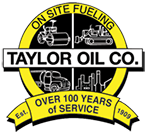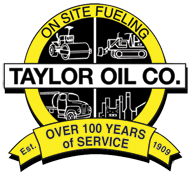Heavy Equipment Motor Oil Misconceptions – There may be a lot of information out there on the best oil selection and maintenance practices for your fleet, but much of that info is untrue. With so many common myths still plaguing the construction industry, we are here to set the record straight, particularly when it comes to heavy-duty diesel engine oils and lubricants.
Myth #1: Don’t Switch Oils
There’s a belief out there that if you start with one oil you should stick with it no matter what. That’s not true. Some people feel that when changing brands of oil, an increase in oil consumption occurs. However, many things contribute to the increase of oil consumption; switching oil brands halfway through just isn’t one of them.
Oil consumption and pressure are affected by many factors, including:
- Filter condition
- Contaminant loading
- Engine component condition
- Oil contamination levels
- Incorrect readings of oil pressure or levels
That being said, when switching brands, some engine manufacturers say that for a short period of time, there may be a harmless increase in elements such as aluminum, copper, potassium, and lead. Always consult with your engine manufacturer and oil provider to find out more about these temporary increases.
Myth #2: Beware of Synthetic Oils
There is a misconception out there regarding synthetic oils causing leaks in current engines. This likely has roots in the fact that when synthetic oils were first introduced in the 1970s, issues regarding seal incompatibility arose because they resulted in leaks. These issues have long since been addressed and this doesn’t happen any longer. If your seals and gaskets are in good condition, leaks won’t occur.
Myth #3: Aftermarket Engine Oil Additives Boost Performance
Some believe that external additives can boost oil performance. Most reputable engine oils already have optimized additives in them. If you put additional additives into the oil, this may upset the chemistry of the oil and decrease its effectiveness.
Myth #4: It’s Possible to Determine Oil Condition at a Glance
Many claim they can determine the oil’s condition just by looking at the dipstick. As you may know already, oil is a light amber color when first poured into the engine but then turns dark almost immediately. However, this doesn’t necessarily indicate that it’s dirty. It only means it’s working the way it was designed to, through the disbursement and suspension of particles.
Myth #5: Oils Don’t Wear Out, They Just Get Dirty
Contrary to popular belief, oils in fact do wear out and must be replaced for optimal performance. There are certainly many factors that limit the useful life of oil in an engine, such as the accumulation of contaminants. However, it’s more likely that an oil change is required due to the depletion of the additive system.
Keep in mind that all oils will wear out eventually…some faster than others. Anything from higher temperatures to contaminants can trigger the need for a change.
Contact Taylor Oil
Got questions about motor oil? We can answer them. Contact us today to learn more. We use all the best brands on the market today, such as Valvoline.


